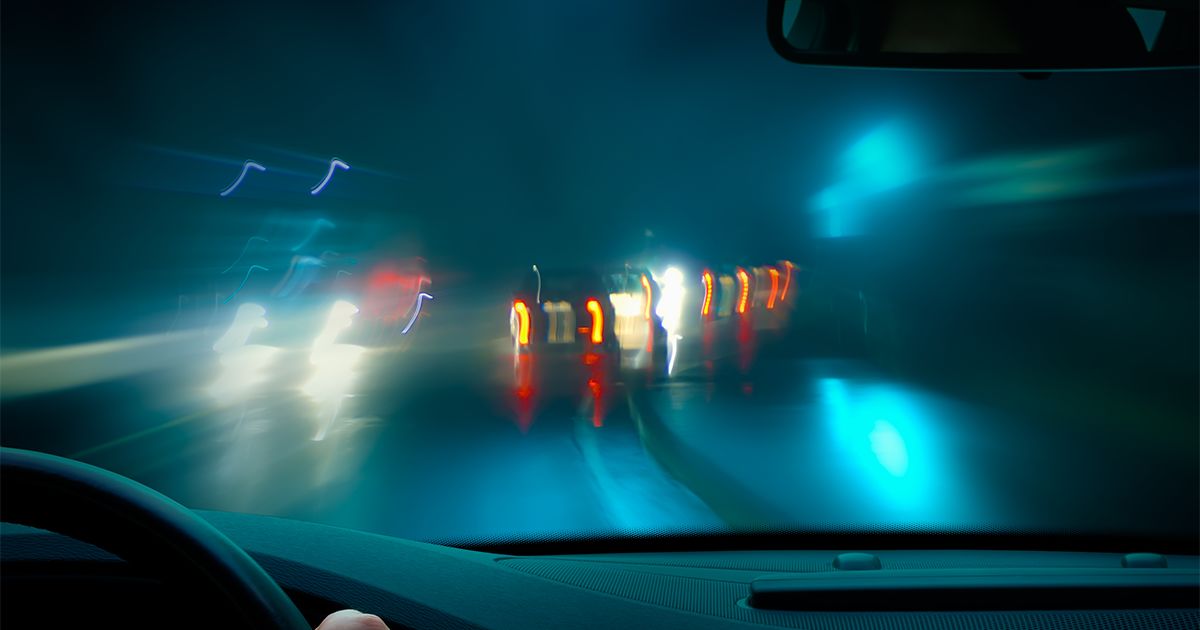Night vision and driving: How safe are older drivers?

Fading night vision can be a serious traffic hazard, particularly among older motorists who drive after dark.
A significant numbers of older drivers with age-related vision problems may not be visiting their eye doctor frequently enough to make sure they can see well enough to drive safely.
To make matters worse, eye problems such as cataracts can develop so slowly that older drivers may be unaware that their vision is declining.
Also, as we age, we commonly experiences declines in vision, cognition and motor function as part of the aging process.

Extra safety precautions may be needed if you are an older driver.
These factors make older drivers vulnerable to accidents in driving situations that require good visual perception, attention and reaction time.
SEE RELATED: Driving in the rain: Dangers and safety tips
Why is aging a problem for night driving?
A number of changes occur in the eye that can affect night driving vision, including:
Pupils shrink and don't dilate as much the dark as we age, reducing the amount of light entering the eye. Some researchers have estimated that the retina of an 80-year-old receives far less light than the retina of a 20-year-old, making older drivers function as though they are wearing sunglasses at night.
The aging cornea and lens in the eye become less clear as we age, causing light to scatter inside the eye, which increases glare. These changes also reduce contrast sensitivity — the ability to discern subtle differences in brightness — making it harder to see objects on the roadway at night.
An older person may exhibit normal visual acuity in an eye exam but still struggle to focus on the road at night, where lighting is poor and more complex visual tasks are required.
Many people's eyes have optical imperfections called higher-order aberrations that can't be corrected with eyeglasses or contact lenses. These aberrations can increase with age and cause glare, especially when the pupil dilates at night.
The risk of age-related macular degeneration (AMD), glaucoma, diabetic retinopathy and cataracts increases with age. These conditions can affect night vision even when they are in early stages.
| Eye Disease | Symptoms |
|---|---|
| Cataract | - Cloudy or
blurry vision - Faded colors - Glare - Headlights, lamps, or sunlight that appear too bright - Halos around lights - Poor night vision - Double vision or multiple images in one eye - Frequent changes in your eyeglasses or contact lens prescription |
| Diabetic retinopathy | - Severe vision loss, even with no initial symptoms
- Blurred vision - Specks of retinal blood, or spots, affecting your vision; spots may clear without treatment, only to be followed by severely blurred vision, severe vision loss and blindness |
| Glaucoma | - No symptoms initially
- Gradual decrease of peripheral vision - Eventual loss of peripheral vision and blindness |
| Dry macular degeneration | - Blurred vision, which is a common early sign
- Inability to see details clearly at a short distance as disease progresses - Small, growing blind spot in central vision |
| Wet macular degeneration | - Straight lines appear crooked
- Loss of central vision |
| Source: National Eye Institute, U.S. National Institutes of Health | |
Ironically, high beams, auxiliary lights and fog lights designed to help you see better at night can put you at risk for an accident due to the glare you may experience when oncoming vehicles have these features.
Finally, some motorists who have undergone laser vision correction such as LASIK may experience increased glare from oncoming headlights due to corneal higher-order aberrations caused by their surgery.
Schedule an eye exam
The only way to make sure your vision is acceptable for driving at night as you get older is to schedule a comprehensive eye exam with an eye doctor near you. Your life could literally depend on it.
READ MORE ON NIGHT VISION:
Tips to improve your driving at night
Night driving glasses: Help or hoax?
Should you wear polarized glasses while you’re driving at night?
What is night myopia (nearsightedness)?
Night vision goggles and binoculars
Night vision (scotopic vision)
Page published on Wednesday, February 27, 2019






